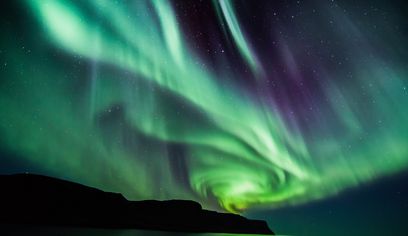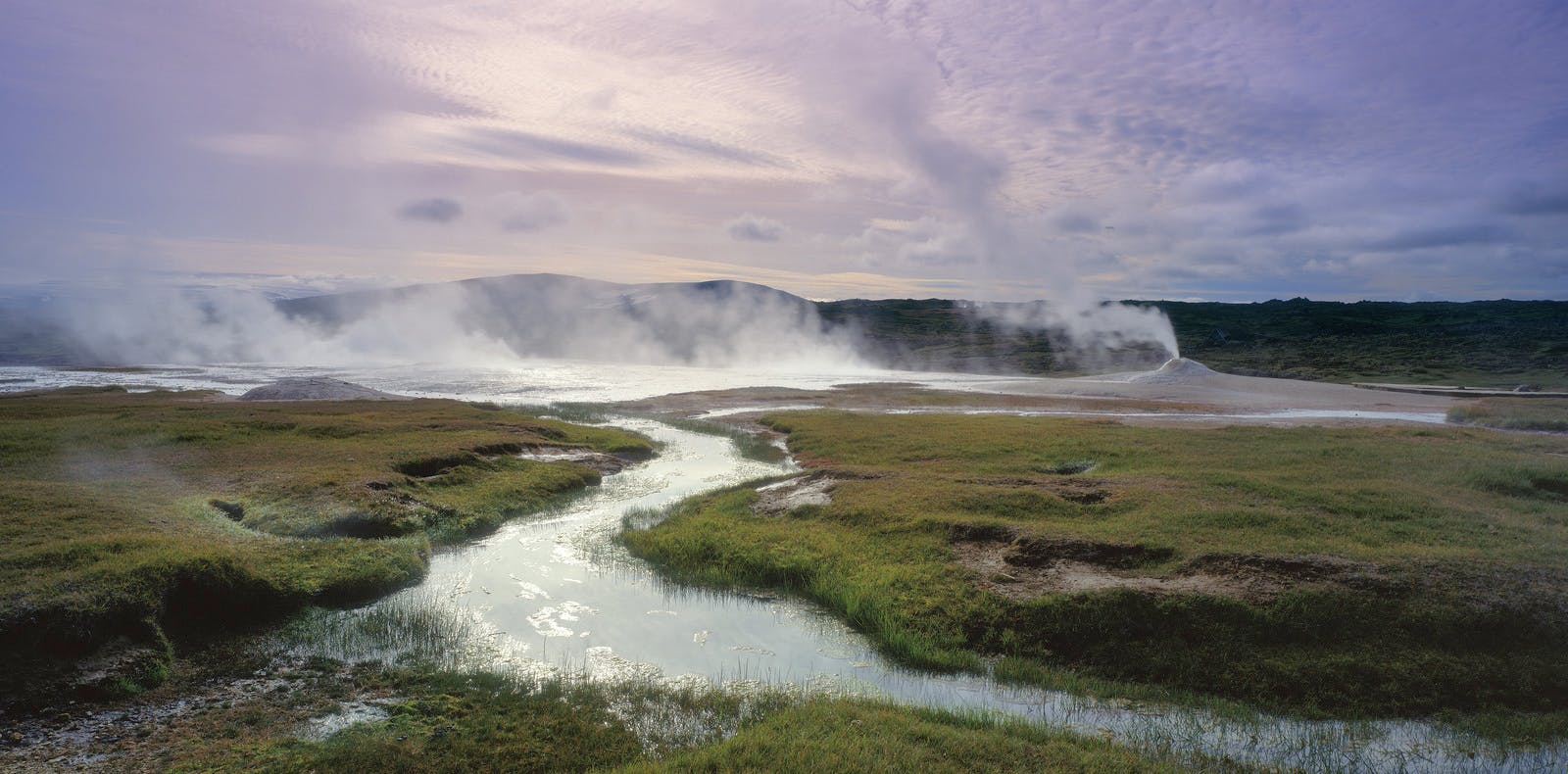
Hveravellir is full of Hot Springs and Hiking Trails
In the 18th century, travelers crossing Iceland’s harsh central highlands relied on Hveravellir as a crucial refuge. The warm geothermal pools provided much-needed relief from the cold and exhaustion during their long journeys.
Today, this geothermal area sits about 650 meters (2,130 feet) above sea level, between the glaciers Langjökull and Hofsjökull. It welcomes visitors with natural hot springs and striking volcanic landscapes.
Protecting a Fragile Ecosystem
Hveravellir is part of a protected nature reserve, reflecting its importance as both a geological and ecological treasure. The geothermal area supports unique plants and animals adapted to the volcanic soil and warm microclimate. Hardy mosses, lichens, and birds such as the golden plover thrive here despite the highland’s harsh conditions.
Visitors are encouraged to stay on marked trails to preserve the delicate ecosystem and minimize human impact. The protection ensures that Hveravellir’s natural hot springs and surrounding wilderness remain pristine for generations to come.
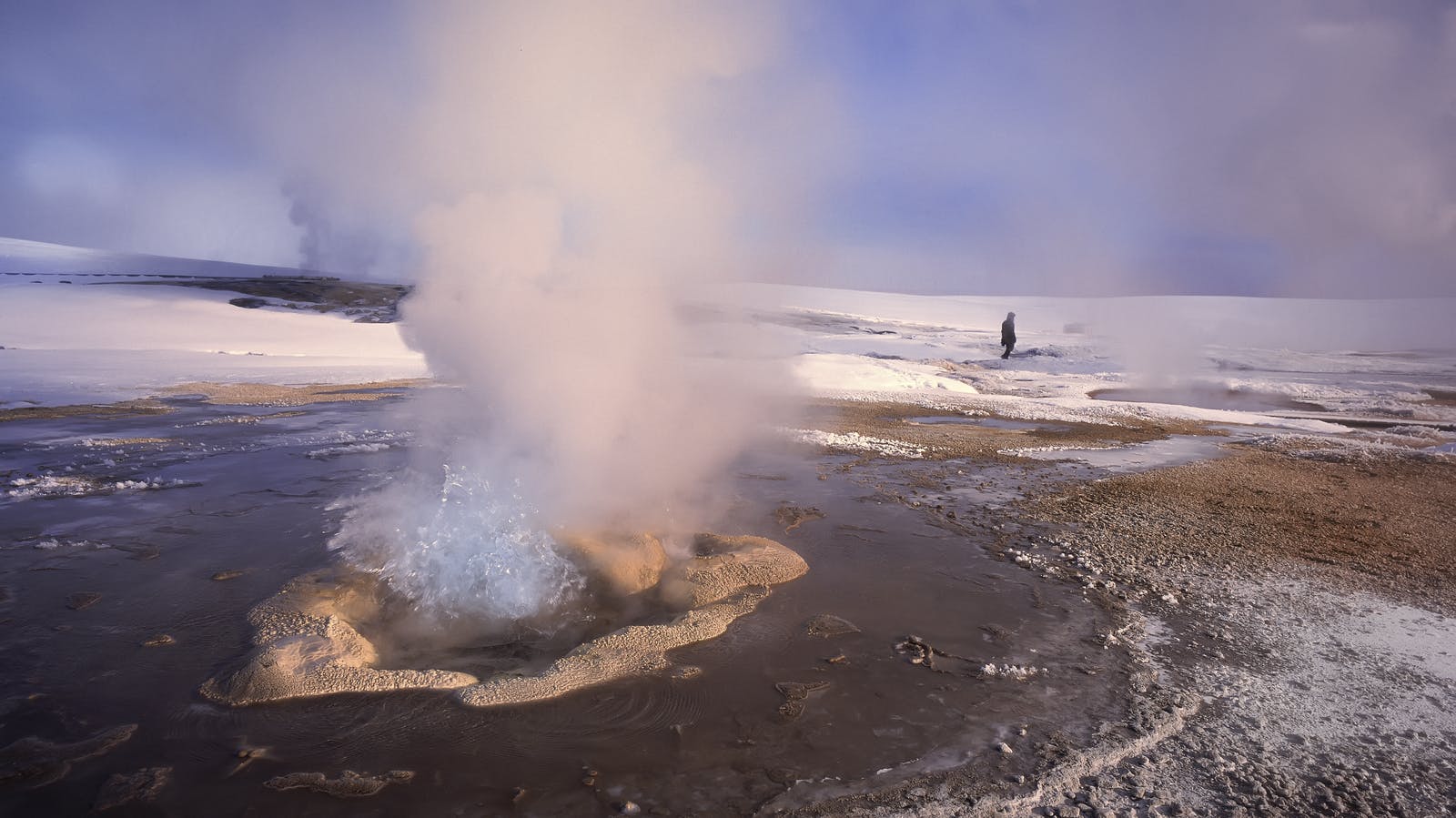
A Geothermal Oasis Amid Lava Fields
The geothermal pools at Hveravellir are fed by volcanic heat from deep beneath the Earth’s surface. This large geothermal area is filled with bubbling hot springs, steaming vents, fumaroles, solfataras, geysers, and colorful mineral deposits. Sitting on the edge of the vast Kjalhraun lava field, formed thousands of years ago, the landscape reveals the raw volcanic forces shaping Iceland.
The hot springs provide a unique combination of hot and cold water, creating soothing pools that offer a natural bathing experience unlike any other in Iceland.
Location and Landscape
Nestled between the glaciers Langjökull and Hofsjökull, Hveravellir sits high in Iceland’s central highlands at 650 meters above sea level. The remote location, surrounded by rugged lava fields and mountains, offers breathtaking views and a chance to see the northern lights during the clear autumn and winter nights.
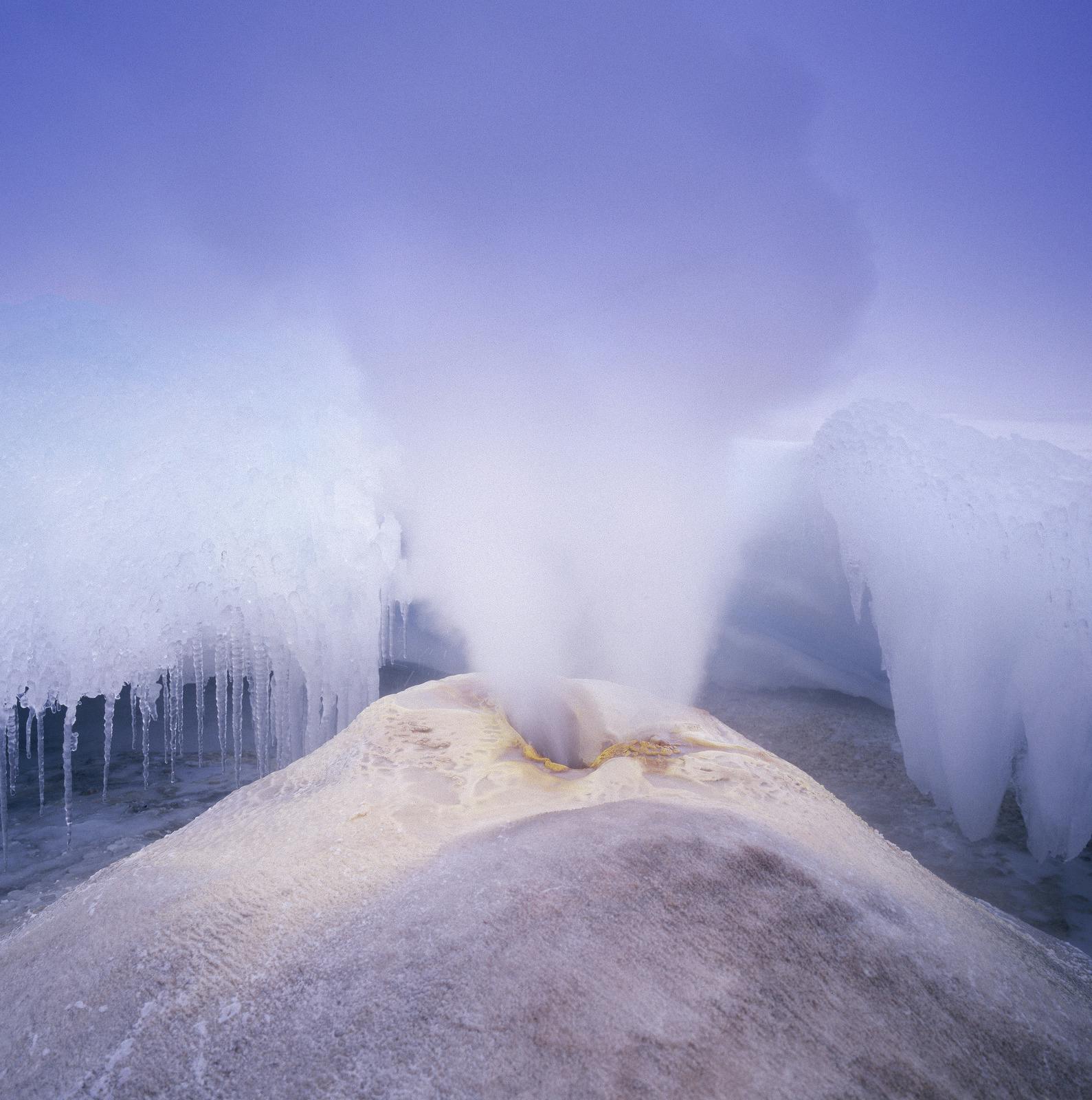
The contrast between icy glaciers and steaming geothermal pools makes the area a striking example of Iceland’s diverse natural wonders.
The Legacy of the Outlaws
Fjalla-Eyvindur and his wife Halla are renowned outlaws in Iceland’s history. They are reported to have fled into the remote highlands around the year 1760. They lived in several places in the wilderness for more than 20 years. One of these places was Hveravellir. There, they built a shelter hidden in the lava that still can be seen, and cooked their food in the hot springs. The largest geyser in Hveravellir is Eyvindarhver (the geyser of Eyvindur). There is also a sculpture memorializing the story of Eyvindur and Halla.
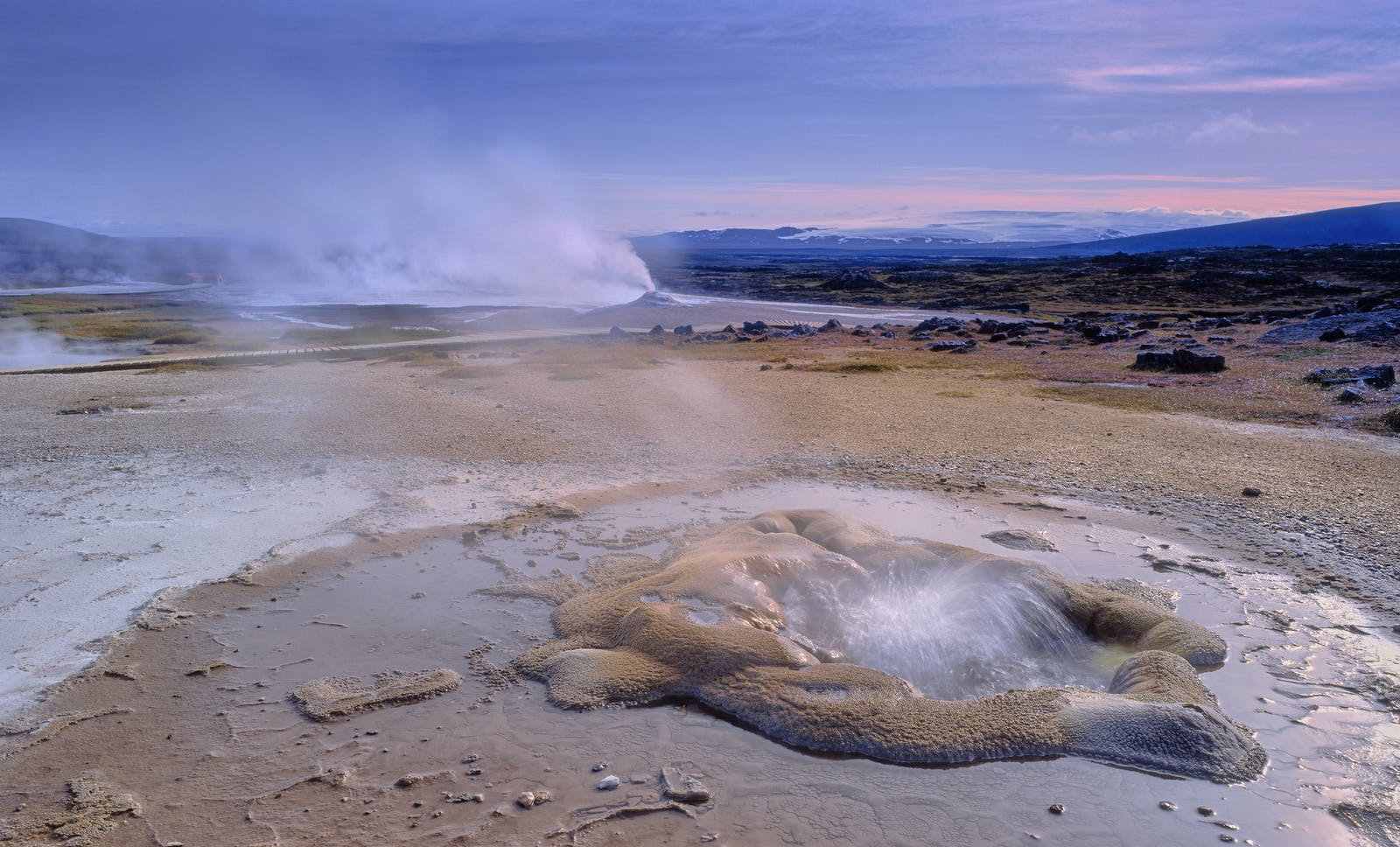
Hiking Trails and Outdoor Adventures
Hveravellir is a gateway to several hiking trails through volcanic craters, lava fields, and geothermal vents. Paths range from easy walks around the hot spring area to challenging hikes to nearby mountain peaks. Exploring the nearby Kjalhraun lava field on foot reveals a dramatic landscape formed by ancient volcanic eruptions.
Hiking here offers a close-up look at the volcanic activity that continues to shape the highlands of Iceland.
Soaking in the Hot Springs
The warm geothermal pools at Hveravellir generally hover around 38–40°C (100–104°F), perfect for relaxing after a day of hiking. The mineral-rich waters are believed to have healing properties and provide a comforting contrast to the crisp highland air. The natural mix of hot and cold water creates a magical atmosphere, especially when steam rises against the chilly backdrop.

Getting There and Facilities
Access to Hveravellir is possible mainly in summer, via gravel roads and river crossings, best navigated by 4x4 vehicles. The drive through Iceland’s central highlands is an adventure in itself, with vast wilderness views along the way.
A mountain hut near the hot springs offers basic accommodation and services. Many visitors choose to stay overnight to fully enjoy the geothermal area and the chance to see the northern lights.
Learn More at Perlan
If you’re curious about Iceland’s geothermal wonders and natural beauty, the Perlan museum in Reykjavik offers engaging exhibits on volcanoes, glaciers, and hot springs. It’s an excellent place to deepen your understanding of Iceland’s natural sites like Hveravellir.
Frequently Asked Questions
Can you swim in Hveravellir?
Yes, the natural hot pools are warm and safe for bathing, with temperatures typically between 38–40°C (100–104°F).
Where is Hveravellir located?
It’s situated in Iceland’s central highlands, about halfway between the glaciers Langjökull and Hofsjökull.
Is Hveravellir open year-round?
No, it is best visited during summer months due to winter road closures and snow.
What kind of wildlife lives near Hveravellir?
Birds like the golden plover nest in the area, and hardy mosses and lichens thrive in the geothermal soil.
Are there hiking trails near Hveravellir?
Yes, several marked trails wind through volcanic craters, lava fields, and geothermal zones.
Is Hveravellir part of a nature reserve?
Yes, it is protected to conserve its unique geothermal and ecological features.
What should I bring when visiting Hveravellir?
Sturdy shoes, warm clothing, and a 4x4 vehicle are recommended for summer visits.
